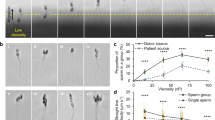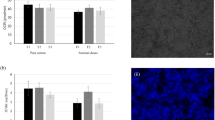Abstract
THE desire to predetermine sex before conception and thus alter the natural sex ratio has led many investigators to seek methods of separating the populations of X- and Y-bearing sperm and over the past 50 years, a number of claims of success have been made. Ericsson et al.1 described a technique for the isolation of fractions rich in human Y sperm. On repeating the methods outlined in their paper, we were unable to find any evidence of enrichment of human Y sperm.
This is a preview of subscription content, access via your institution
Access options
Subscribe to this journal
Receive 51 print issues and online access
$199.00 per year
only $3.90 per issue
Buy this article
- Purchase on SpringerLink
- Instant access to full article PDF
Prices may be subject to local taxes which are calculated during checkout
Similar content being viewed by others
References
Ericsson, R. J., Langevin, C. N., and Nishino, M., Nature, 246, 421–424 (1973).
Barlow, P., and Vosa, C. G., Nature, 226, 961–962 (1970).
Pearson, P. L., Bobrow, M., Vosa, C. G., and Barlow, P. W., Nature, 231, 326–329 (1971).
Sumner, A. T., Robinson, J. A., and Evans, H. J., Nature new Biol., 229, 231–233 (1971).
Ulstein, M., Acta Obstet. Gynec. scand., 51, 335–340 (1972).
Author information
Authors and Affiliations
Rights and permissions
About this article
Cite this article
EVANS, J., DOUGLAS, T. & RENTON, J. An attempt to separate fractions rich in human Y sperm. Nature 253, 352–354 (1975). https://doi.org/10.1038/253352a0
Received:
Revised:
Issue date:
DOI: https://doi.org/10.1038/253352a0



